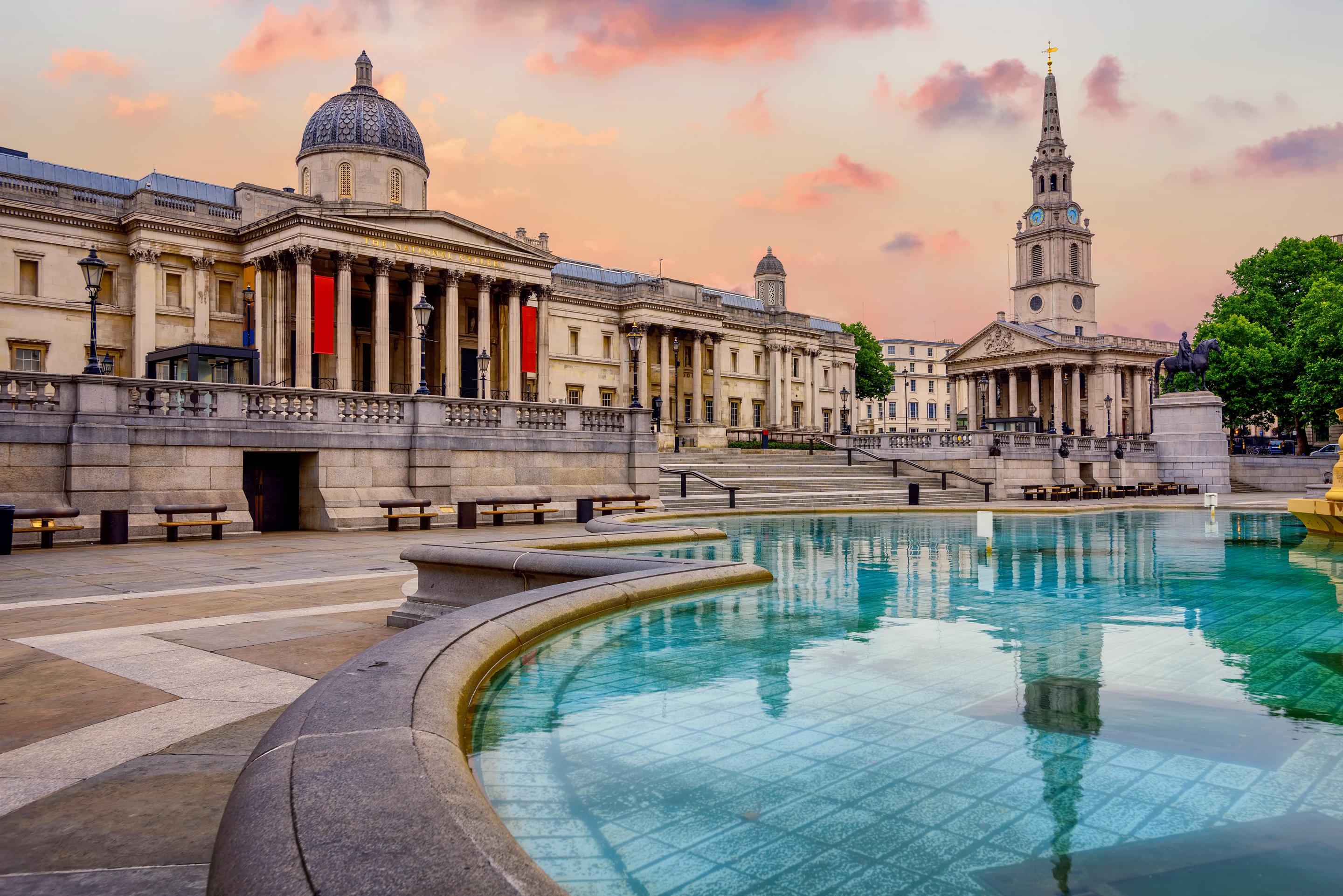About National Gallery
From the 13th through the early 20th centuries, the National Gallery London housed the nation's collection of Western European paintings. The National Gallery, located in Trafalgar Square in central London, is free to the public for 361 days of the year. Van Eyck, Raphael, Leonardo da Vinci, Turner, Rembrandt, Degas, Cézanne, Van Gogh, Renoir, Monet, Rubens, Velázquez, Van Dyck, Titian, and Bellini are among the most well-known Western European painters represented in the collection, must include place in your Europe trip packages.
There is no other collection that is as constant in quality that covers the tale of Western European art as well as this one. Almost every one of the National Gallery's 2,300 paintings is on exhibit all the time. The British Government bought 38 paintings from financier John Julius Angerstein in 1824, and the Gallery was born. The photographs were put on exhibit in Angerstein's former home on Pall Mall because no suitable venue was available to display the collection. The collection was only relocated to its location in Trafalgar Square in 1838.
National Gallery Highlights
• Among the more than 2,300 paintings in the National Gallery Collection, collections of Van Eyck's 'Arnolfini Portrait,' Velázquez's 'Rokeby Venus,' Turner's 'Fighting Temeraire,' and Van Gogh's 'Sunflowers' forms the highlight of the gallery.
• Every major tradition of Western European painting is represented from late medieval and Renaissance Italian painters to the French Impressionists.
• Duccio, Uccello, Lippi, Dürer, Mantegna, Botticelli, van Eyck, Memling, and Bellini paintings belonging from the 13th to 15th centuries attract many tourists.
• Paintings by Leonardo da Vinci, Cranach, Michelangelo, Raphael, Holbein, Bruegel, Bronzino, Titian, and Veronese from the sixteenth century are some unique collections.
• Caravaggio, Rubens, Velázquez, Claude, Van Dyck, Rembrandt, Poussin, Cuyp, and Vermeer paintings from the seventeenth century and paintings by Goya, Canaletto, Constable, Ingres, Turner, Degas, Cézanne, Monet, and Van Gogh from the 18th century to the early 20th century are the latest collection which also depicts modernization.
How To Reach National Gallery
By Bus: Westminster, on the Jubilee, District, and Circle lines, is the nearest tube station providing step-free access from the platform to street level. Then take bus numbers 12, 24, 88, or 453 to your destination.
By Car: In Orange Street, badge holders have access to one off-street parking place. It should be reserved ahead of time. Level access to the entrance is provided via designated parking places for badge holders behind the Sainsbury wing on St Martin’s Street.
Suggested Read: Unusual Places To Visit In London
Best Time To Visit National Gallery
The National Gallery London is a British institution, and it is rarely empty. Because there is no admittance cost, there isn't much of a line. However, because the Gallery draws more than 5 million visitors each year, it may get rather crowded inside. The quietest period is usually first thing in the morning: come early for the opening and head straight for the most popular paintings if you want to get up close and personal with the artwork before the throng gathers.
The Gallery's late opening on Fridays is also a nice option: it stays open until 21:00.
The busiest hours are 15:00 and 18:00.
Planning A Trip To London, Checkout Our London Tour Packages Now!
National Gallery Other Essential Information
- Lift: Lift facilities are available that is easily accessible
- Ease: All routes are appropriate for prams or pushchairs. Some routes are suited for people with limited mobility and have spoken announcements on arrival at each floor.
- Tours: Tours are available in a variety of languages.
- Menu: On the menu, there is a nut-free option as well as there are vegetarian options, they have fixed prices.
- Shops and Restaurant: There is a shop at the premises of the gallery for gifts and certain restaurants as well. Catering for events at a bar or cafe are also available.
Also Read: Romantic Things To Do In London
A Young Woman Standing At A Virginal By Johannes Vermeer
People believe that this painting and another by Vermeer, A Young Woman Seated at a Virginal (in the National Gallery), were created together. There are many parallels between the two, yet there is also a noticeable difference. The one may indicate loyalty, while the other may represent a venal, mercenary approach to love.
Check This Out: Places To Visit In London
Bacchus And Ariadne By Titian
The Camerino d'Alabastro in the Ducal Palace commissioned this painting as part of a famed series by Giovanni Bellini, Titian, and the Ferrarese artist Dosso Dossid. Titian demonstrates his mastery of colour by using all of the purest and most bright colours available at the time in this single painting.
Bathers By Paul Cezanne
Around 200 of Cézanne's works portray naked men and women in landscapes, alone or in groups. This huge painting is one of three portraits of female bathers created by Cézanne in his final decade.
Read More: Things To Do In London
Doge Leonardo Loredan By Giovanni Bellani
Bellini undoubtedly intended for this visual connection to be made, but he demonstrates how his skill in oil paint allows him to go beyond sculptural portraits. He achieved believable tonal transitions when painting flesh thanks to the subtle colour blending in this slow-drying medium. Loredan's look appears to be changing, making him look lifelike and direct and aloof and imposing.
Samson And Delilah By Peter Paul Rubens
During a visit to Italy, Rubens witnessed Caravaggio's experiments with dramatically contrasted light and shade, as well as deep, rich colour. When he returned, Nicolaas II Rockox, the mayor of Antwerp, commissioned him to paint Samson and Delilah for his private collection, and he employed these new techniques to complete it.
Recommended Read: Historical Places In London
Tourism Board Alliances
National Gallery FAQs
What are the other attraction tickets for London I can book via Thrillophilia?
Here are the other attractions and activities in London you can book via thrillophilia:













.jpg?w=1280&dpr=1)



.jpg?w=1280&dpr=1)
